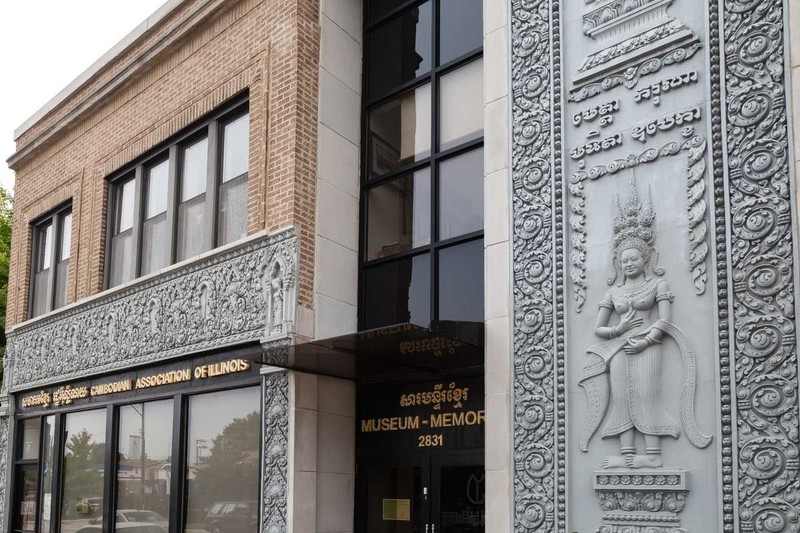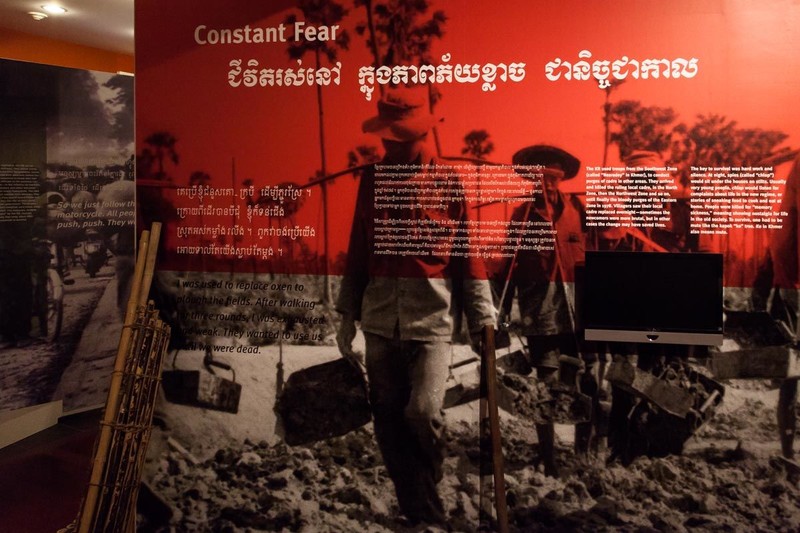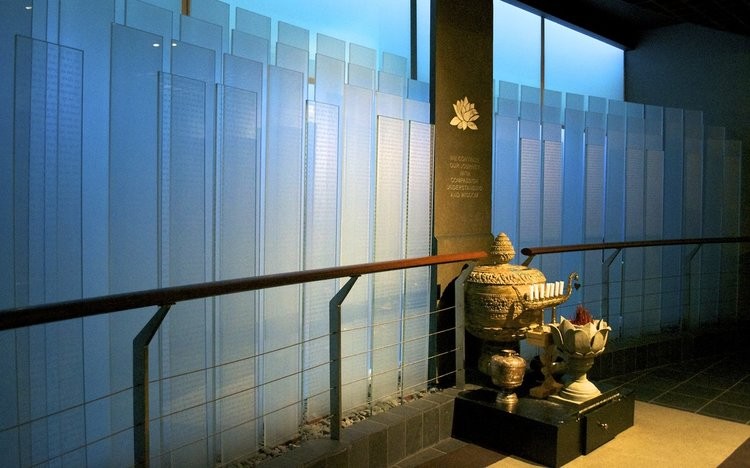National Cambodian Heritage Museum & Killing Fields Memorial
Introduction
Text-to-speech Audio
Images
The National Cambodian Heritage Museum & Killing Fields Memorial opened to the public in 2004. Image obtained from On the Grid.

The museum's permanent exhibit, "Remembering the Killing Fields," teaches about the horrific Cambodian Genocide of 1975-1979. Image obtained from On the Grid.

The Killing Fields Memorial honors the over two million victims of the Cambodian Genocide with their names engraved on a series of glass plates. Image obtained from the National Cambodian Heritage Museum & Killing Fields Memorial.

Backstory and Context
Text-to-speech Audio
The number of Cambodians immigrating to the United States was negligible until 1975. That year the Communist Party of Kampuchea, commonly known as the Khmer Rouge, seized control of the Southeast Asian country after a bloody civil war. Over the next several years the Khmer Rouge attempted to transform Cambodia into a classless agrarian society and launched a brutal campaign of genocide to crush any dissent. Intellectuals and the well-educated in particular were targeted; city residents were forced into labor camps; doctors, teachers, scientists, activists, artists, monks, the wealthy, and people from minority groups faced execution. Many were gunned down en masse and buried in open spaces that were soon dubbed “killing fields.” More than two million people were killed over a four-year span. In 1979 Vietnam invaded Cambodia and removed the Khmer Rouge regime.
Hundreds of thousands of Cambodians immigrated to the United States during and immediately after the Khmer Rouge regime. Most settled in Massachusetts and California, but several thousand came to Chicago, where they concentrated in the Uptown and Albany Park neighborhoods. Today it is estimated around 3,000 or more Cambodians and their descendants live in the city. In 1976 the Cambodian Association of Illinois was formed; originally a chapter of the Cambodian Association of America, it separated to become an independent entity in 1983. The society’s original mission was to provide support services to help Cambodian immigrants adjust to life in America. It provided aid, offered English lessons, and taught Cambodians how to do tasks such as rent apartments and go grocery shopping. Today the association’s goals have shifted more towards keeping the Cambodian American community connected; preserving its culture; and remembering the Cambodian Genocide.
In 1998 the Cambodian Association of Illinois purchased a building on Lawrence Avenue with the intent of opening a museum and memorial. Over a million dollars in funding was raised for construction and renovations. The Cambodian American Heritage Museum and Killing Fields Memorial opened to the public in 2004. In 2015 the museum was incorporated as an independent entity (while still a part of the CAI) and changed its name to the National Cambodian Heritage Museum & Killing Fields Memorial. The museum currently contains one permanent exhibit, “Remembering the Killing Fields,” which tells the story of the Cambodian Genocide with images and artifacts from the event. Another section of the building houses the Killing Fields Memorial, the first permanent monument to the victims of the Cambodian Genocide. It includes a Wall of Remembrance, where a growing list of victims is etched onto a series of glass panels. The museum still serves as the headquarters of the Cambodian Association of Illinois, which operates a gift shop and a research library containing various resources on Cambodia, Cambodian Americans, Buddhism, and the Khmer language. The museum and CAI also operate a cultural arts program that offers traditional dance, music, and language lessons.
Sources
“Our Story.” National Cambodian Heritage Museum and Killing Fields Memorial. Accessed April 10, 2018. https://www.cambodianmuseum.org/what-we-do/
Morrissey, Robert. “Cambodians.” Encyclopedia of Chicago. Accessed April 10, 2018. https://www.encyclopedia.chicagohistory.org/pages/205.html
“Pol Pot.” History.com. 2009. Accessed April 11, 2018. https://www.history.com/topics/pol-pot
Rhee, Nissa. “The Cambodian Association of Illinois celebrates 40 years by looking ahead.” Chicago Reader. May 26, 2016. Accessed April 10, 2018. https://www.chicagoreader.com/chicago/cambodian-association-illinois-khmer-rouge-kompha-seth/Content?oid=22237231
“The Cambodian Genocide.” United to End Genocide. Accessed April 10, 2018. http://endgenocide.org/learn/past-genocides/the-cambodian-genocide/
Tsouderos, Trine. “Cambodia in Chicago: Beauty of Angkor is in reach.” Chicago Tribune. October 27, 2005. Accessed April 10, 2018. http://articles.chicagotribune.com/2005-10-27/entertainment/0510260343_1_khmer-rouge-cambodian-restaurants-refugee-camps
Images 1 and 2: https://onthegrid.city/chicago/albany-park/national-cambodian-heritage-museum
Image 3: https://www.cambodianmuseum.org/wall-of-remembrance/
